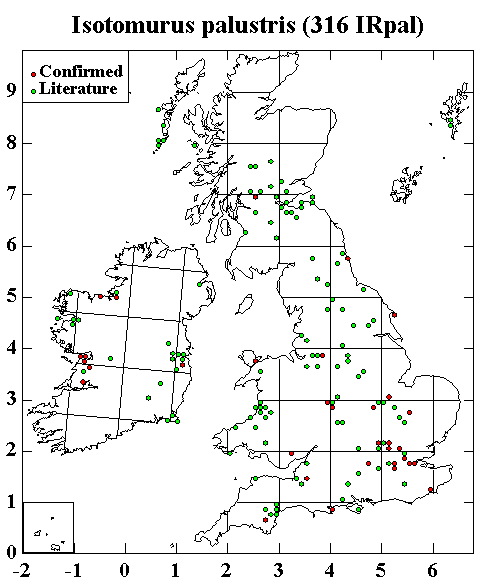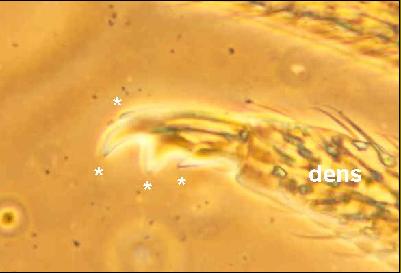|
The map for Isotomurus palustris contains many literature records that should probably refer to Isotomurus fucicolus, Isotomurus maculatus, and other Isotomurus before they were recognised as separate species and not simply colour varieties of Isotomurus palustris. In Isotomurus palustris, the central stripe is prominent and unbroken (Fig. 1) whereas in Isotomurus maculatus, the distribution of pigment is much more patchy. All Isotomurus possess trichobothria on the dorsal side of the abdomen (Fig. 4). The mucro is also distinctive and has four teeth, the apical one being quite small (Fig. 5).
Isotomurus palustris is a species of wet habitats. In a garden in Reading, Isotomurus maculatus occurred among liverworts growing in the cracks between the stones of a shaded path at all times whereas Isotomurus palustris could only be found during periods of rain when the liverworts were wet.
There is an excellent web site on European Isotomurus by Antonio Carapelli and colleagues at the University of Siena [http://www.unisi.it/ricerca/dip/collemboli/isotopage/intro.htm]
Back to main page
|
|











